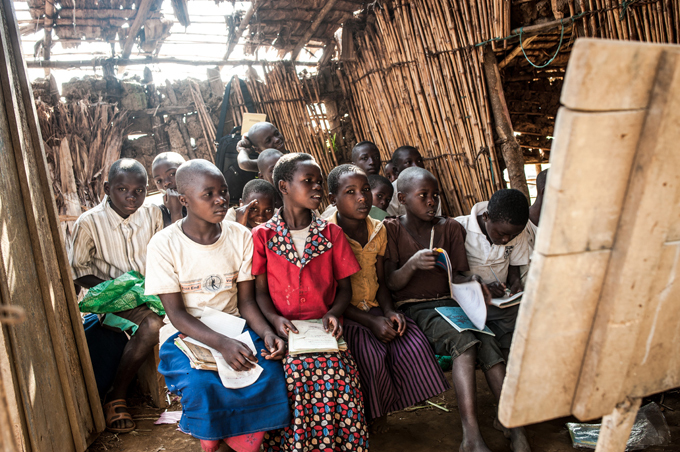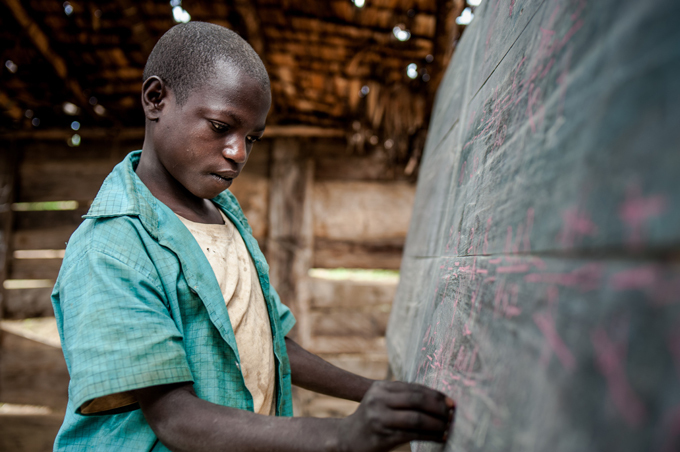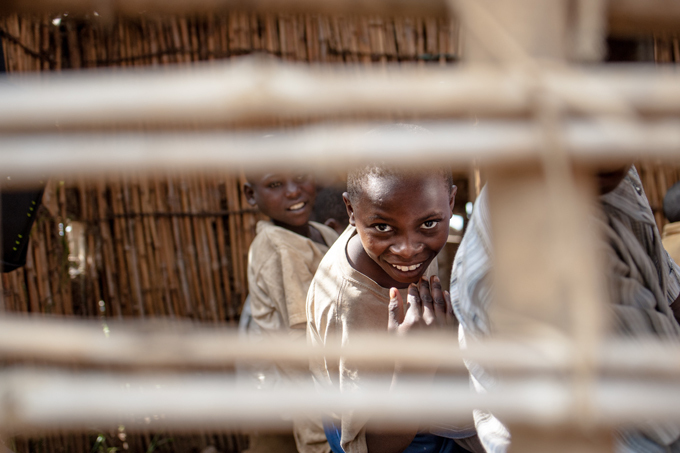No aid for Kasaï crisis victims in the DRC
Jun 20, 2017
Some 8,000 people were displaced per day in May alone

As the World commemorates the International Day for Refugees, the Norwegian Refugee Council is calling attention to the millions of people affected by the crisis in Kasai region in the Democratic Republic of Congo (DRC).
 A class room at Lufunda Primary School in Mpati, North Kivu province. Photo: NRC/Christian Jepsen
A class room at Lufunda Primary School in Mpati, North Kivu province. Photo: NRC/Christian JepsenIn a statement released Tuesday by the agency, over 1.3 million people have been displaced by an outbreak in violence in DR Congo's Kasaï region since August 2016.
Some 8,000 people were displaced per day in May alone. Almost half of those displaced are children, thousands of whom have been victim to indiscriminate violence, separated from their parents and recruited by armed groups.
 Schools are struggling to accommodate the influx of new pupils displaced by conflict. Photo: NRC/Christian Jepsen
Schools are struggling to accommodate the influx of new pupils displaced by conflict. Photo: NRC/Christian Jepsen"The Democratic Republic of the Congo is experiencing one of the largest displacement crisis in the world today. Despite this, we're seeing a woefully inadequate number of aid agencies on the ground responding, and a pitiful amount of money trickling in to deliver aid," said the Norwegian Refugee Council's (NRC) country director in DR Congo, Ulrika Blom.
According to NRC, a total of 338 schools in Kasaï Central were not in use because of the conflict. This represents over 1 in 10 schools in the region. In Nganza village for example, the situation is especially complicated with some schools being occupied by armed groups.
"Children have been hit hardest by the conflict," said Blom. "Many schools are destroyed or occupied by armed groups, robbing thousands of children the chance of an education. For the lucky ones whose schools remain open, many are too scared to risk going, and so can't sit their exams as a result."
 Many internally displaced children miss out on education and boys often end up being recruited by armed groups. Photo: NRC/Christian Jepsen
Many internally displaced children miss out on education and boys often end up being recruited by armed groups. Photo: NRC/Christian JepsenAn emergency flash appeal by the United Nations Office for the Coordination of Humanitarian Affairs (OCHA) in April has only managed to raise 53% of a requested US$65 million in terms of intent. But of this, only 8% has actually been provided so far.
"Access to communities in need in Kasaï Central is improving, so we should be using this window to scale up and respond. But without the necessary funding, our hands are tied," continued Blom.

In neighbouring Uganda, a total of 1.2million refugees especially from South Sudan are currently being hosted in the different camps in the north and west Nile regions.
Uganda will this week host the Solidarity Summit with the UN General Secretary Antonio Guterres expected as the chief guest.
Facts on impact of the crisis in DRC
- Over 1.3 million people are internally displaced in Kasaï. Over a third of people displaced in DRC are in the Kasaï provinces.
- 639 schools destroyed by the conflict in the Kasaï provinces, according to the UN mission (MONUSCO).
- Over 3.7 million people are internally displaced in DRC as of May 2017. This is an increase from December 2016 of with 1.5 million people, mainly in Kasaï.
- 475,000 Congolese have fled to neighbouring countries, according to the UN refugee agency (UNHCR). Over 20,000 people recently fled from Kasaï to Angola.
- An estimated 7 million of DR Congo's 92 million people need humanitarian aid.
- The country's overall humanitarian appeal for 2017 is only 20 per cent funded - with only US$168 million received of a $812 million requested.
- 1 in 10 people in eastern DR Congo was displaced in the past decade.
- Life expectancy in DR Congo is only 58 years.
- On average 1 in 10 children die before their 5th birthday.
- DR Congo ranks 176 of 188 on the world's human development index.
- DR Congo is among the last 10 per cent of the least developed countries in the world, according to the UN's Development Programme.
